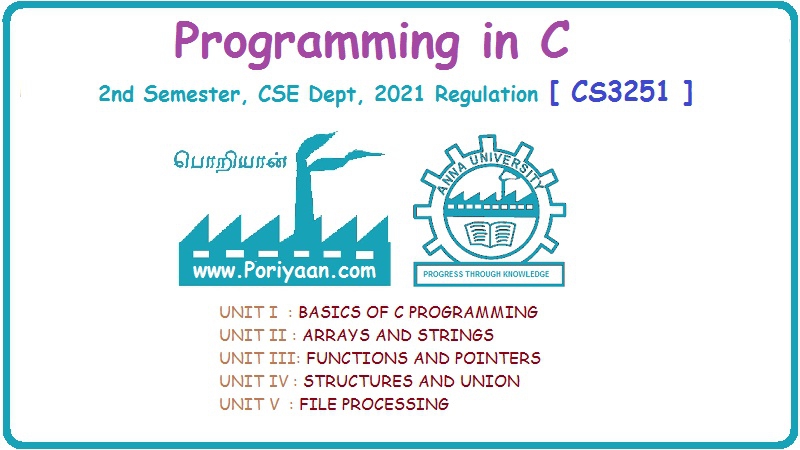Programming in C: Unit I (d): Preprocessor Directives
#include
with Example C Programs | Preprocessor Directives
An external file containing function, variables or macro definitions can be included as a part of our program. This avoids the effort to re-write the code that is already written.
#INCLUDE
An
external file containing function, variables or macro definitions can be
included as a part of our program. This avoids the effort to re-write the code
that is already written. The #include directive
is used to inform the preprocessor to treat the contents of a specified file as
if those contents had already appeared in the source program at the point where
the directive appears.
The #include directive can be used in two
forms. Both the forms make the preprocessor insert the entire contents of the
specified file into the source code of our program. However, the difference
between the two is the way in which they search for the specified.
#include <filename>
This
variant is used for system header files. When we include a file using angular
brackets, a search is made for the file named filename in a in a standard list
of system directories.
#include "filename"
This
variant is used for header files of your own program. When we include a file
using double quotes, the preprocessor searches the file named filename first in
the directory containing the current file, then in the quote directories and
then the same directories used for
<filename>
Note
The
filename can optionally be preceded by a directory specification. For example,
you may specify the exact path by writing "c:\students\my_header.h".
Points to
Remember
The
preprocessor stops searching the directory as soon as it finds a file with the
given name.
If
a completely unambiguous path for the file is specified between double
quotation marks (" "), then the preprocessor searches only that path
specification and ignores the standard directories.
If
an incomplete path is specified for the filename in double quotes, then the
preprocessor first searches the parent file's directory (where a parent file is
the one which contains the #include directive.
For example, if you include a file named file2
within a file named file1,file1
is the parent file).
File
inclusion can be 'nested'; i.e., a
#include directive can appear in a file named by another #include directive. For example, filel
can include file2, and in turn file2 can include another file named file3. In this case, filel would be the
parent of file2 and the grandparent
of file3.
When
file inclusion is nested and when compiling is done from the command line,
directory searching begins with the directories of the parent file and then
proceeds through the directories of any grandparent files.
Note
Nesting
of include files can continue up to 10 levels.
Programming in C: Unit I (d): Preprocessor Directives : Tag: : with Example C Programs | Preprocessor Directives - #include
Related Topics
Related Subjects
Programming in C
CS3251 2nd Semester CSE Dept 2021 | Regulation | 2nd Semester CSE Dept 2021 Regulation
